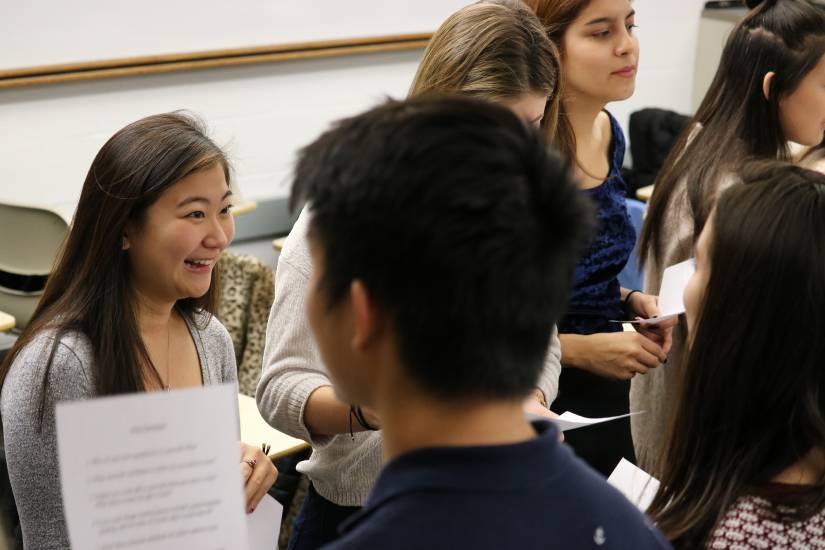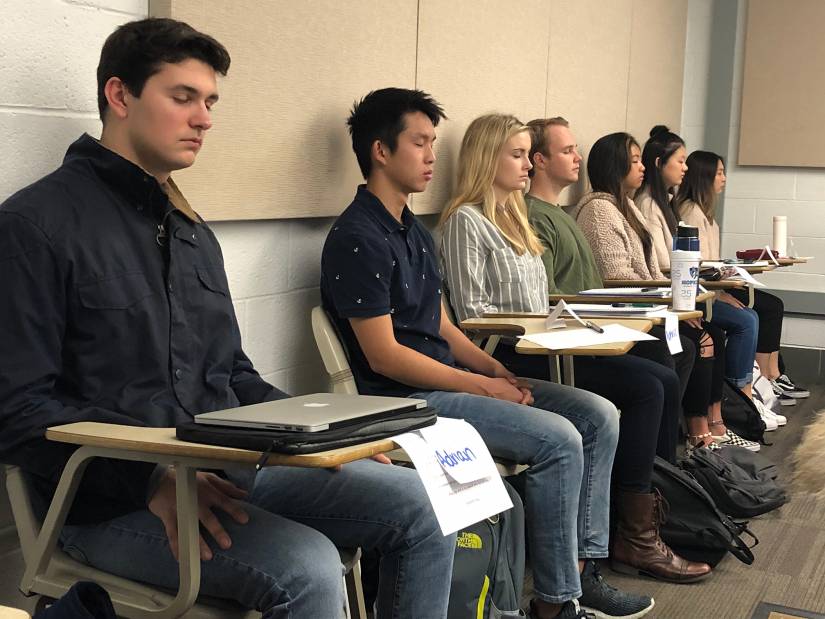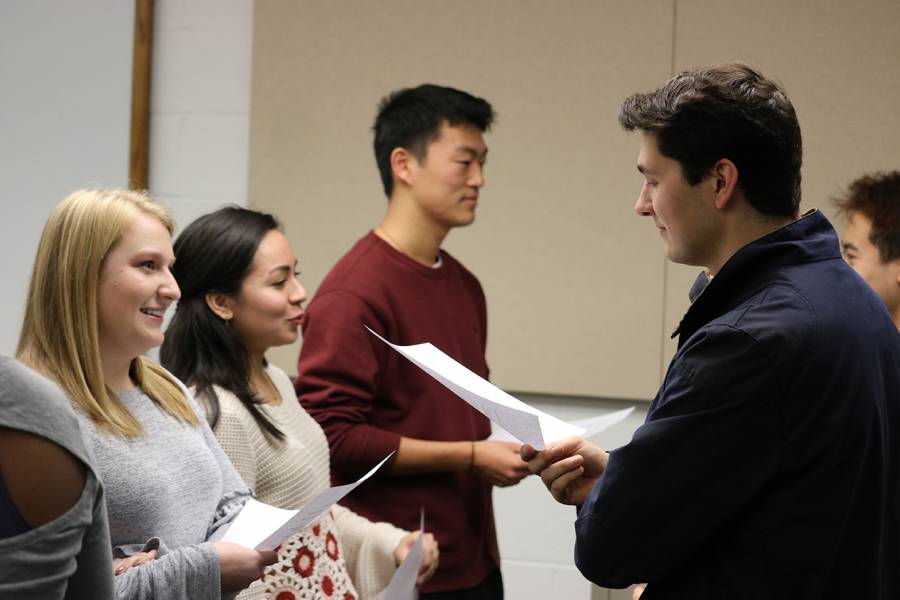Are you happy?
It's a simple question, but one with surprising depth. What does happiness even mean? Is it the fleeting pleasure you get from a slice of chocolate cake? Is it the satisfaction of a job well done? Or is it simply a joy for life? Maybe Pharrell is right, and it's the feeling of a room without a roof.
For two weeks, students at Johns Hopkins University are examining these questions and more in The Art of Science and Happiness, an Intersession course devoted to the pursuit of happiness.
Instructor David Mercier opened with a theory put forth by psychologist Ken Wilber that happiness is related to our developmental stage. It's an outlook that takes shape only by positively developing our social, mental, and physical health. But, Mercier said, many of us confuse happiness with impermanent joys and pleasures. The most difficult struggles occur when people begin chasing the state of happiness to the detriment of their development.

"Happiness is not a state. Because every state will go. The more we're obsessed with experiencing positive states, often the more we can deteriorate," Mercier said. "Happiness is an open-ended question, but what we're dealing with is who you are, how you live your life, and how you produce a life that works for you."
For two weeks, students will focus on multiple lines of self-improvement, including physical, analytic, social, and moral lines. Below is the daily regimen Mercier requires of his students and recommends for all of us in order to start on the path toward happiness.
Write down 10 things you are grateful for
Every day, he recommends noting of 10 things you are grateful for. This can be anything from people in your life to the simple appreciation of being alive. This practice helps counter the effects of hedonic adaptation, a psychological condition where the mind become used to the things that bring us pleasure and joy until they become invisible to us.
Often, our attention is drawn by the challenges and struggles of life. By focusing on the things you are grateful for, you can renew your appreciation for them and can see them with fresh eyes.
Embodied cognition
For this task, students are asked to walk around campus for five minutes a day with perfectly straight posture, and a smile plastered across their face. While Mercier admits this practice can feel awkward, he said the act is enough to change your emotional state.
A change in posture creates an instant boost in self-confidence. The act of creating a new habit is also enough to start rewiring the brain. Eventually there is a perceptual shift that mirrors the posture itself. The usefulness is reflected in a simple motto: Stand more bold; be more bold.

Mindfulness
Students are asked to engage each day in a 15-minute mindfulness exercise. Sit up straight, close your eyes, and focus on the present. That focus can take the form of accepting thoughts as they come to you, paying attention to your breathing and other physical sensations, or just embracing the silence of the mind.
FMRIs have shown mindfulness acting in real time, moving the locus of the brain's activity from the stress centers of the brain toward the prefrontal cortex, where rational perspectives are housed. According to Mercier, this meditation is a useful tool in reducing anxiety and depression while improving intellectual performance and dramatically increasing the possibility of experiencing states of happiness.
"The vast majority of our emotional suffering is focused on the past or future. It's not right now," Mercier said. "Mindfulness brings us into the endless present. It's always here. It's always now."
Nine questions
Each day, the students are asked to pair up with a classmate to do a deep dive into each others' personalities with nine personal questions, designed to build a deeper bond between strangers. The nine are inspired by a longer questionnaire developed by psychologist Arthur Aron.
Questions include "Who are you most grateful for in your life?" "What character attributes in others do you admire most?" and "What did you learn from the most difficult time you've had in your life?"
In answering, you build a relationship with your partner by stripping away the surface-level interactions that make up most of our conversations. The intimacy formed often leads to deeper social connections, one of the most vital components for a happier life.
Mercier cites studies that have shown that social networks are the single most important factor for low morbidity and life longevity. In addition to the social component, by reflecting on these questions and answering truthfully, you become more self-aware.
Posted in Student Life
Tagged intersession









